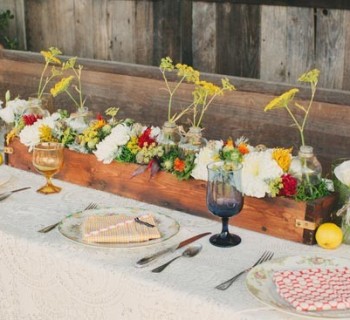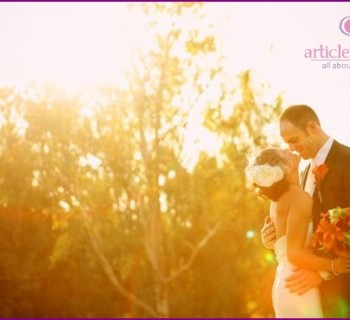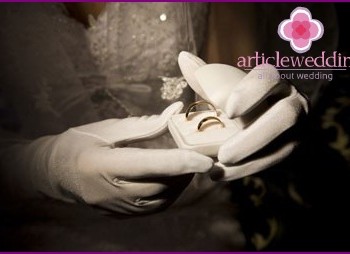Contents
Wedding traditions
divided into three parts: pre-wedding, which includes the ceremony of matchmaking and engagement, wedding, including the wedding and the wedding itself, and post-wedding, consisting of cakes and honeymoon.
In order to prepare the groom for departure, everyone needed to make a lot of effort. Boys and girls decorated the wagons, the main attribute of which were bells, the festive ringing of which informed all residents about the festive event, and, moreover, destroyed evil forces and cleared their path. After everything was ready in the groom's house for his departure, they set a table in the center of the house, covered it with a white tablecloth, put bread and salt and lit a candle. The father bandaged his son’s hands with a woven towel, then three times he circled the young man around the table, and then led to the threshold. Then the son was given the icon on which Jesus was depicted, and the mother, holding the icon and a candle, blessed the young man on the road. The icon remained at home, and the matchmaker took vodka, money, cookies, sweets, belts necessary for the bride ransom ceremony with him. Together with the groom and the matchmaker, his godmother, brother or a good friend of the groom, and several other carts with musicians and youth went for ransom. Meanwhile, the bride’s squad was preparing to meet the guests. Parents of the bride laid the festive table, girlfriends dressed up the girl. This usually happened in the bride’s house, but it was strictly forbidden to dress her in the house of a widower or widower, divorced people, or where there was a fire or a child dying. The ideal option was a house where a rich and happy family lived.
The bridesmaids braided her braid, wore red boots, fitted a dress along the figure and bandaged the girl with a red belt. Then they put on a white veil, consisting of three parts, one of which covered the braid, the other fell on the bride's face, and the third was a wreath that was attached over the veil. Such a wreath could consist of both living and artificial flowers, which were made of paper or ribbon and fixed on a cardboard hoop. If the wreath was woven from fresh flowers, then we used mint, periwinkle, viburnum, and ruta. By the color scheme, as well as the shape of the wreath, people could judge what was the social status of the bride. The root flower was a symbol of innocence, so only a bride who preserved this innocence could wear such a wreath. In the case when the girl was an orphan, a leaf of mint was woven into the wreath.
The bride’s ransom ceremony was similar to the Belarusian market: one side had to “pull out” more for extraordinary goods, the other - to bring down the price to a minimum. When the “deal” satisfied both the side of the groom and the side of the bride, the guy took the girl by the hand and led him to his house, where the bride was waiting for the guests. Relatives of the bride and groom sat on opposite sides of the table. The first speech was for the elder matchmaker, and then, after a short meal, preparation took place for a trip to the temple.
In the old days there was a custom right after
weddings
visit the graves of their ancestors, located near the temple. Then the tradition was replaced by visits to memorial complexes, monuments and mass graves, although scientists say that the aura reigning over them is very far from festive. On the way home, the bride and groom needed to drive through seven bridges, through each of which the bridegroom carried the bride in her arms, and it was forbidden for anyone to cross the road.
When the young drove up to the house, they did not leave the wagon until their parents appeared on the threshold of the house. From the wagon, the young ones had to step on the bedspread, and not on the ground. Often the coverlet was replaced with an inverted casing, since it was considered a symbol of the dead, helping those living on the earth. Young met mother. In her hands was a towel and loaf. The father poured a glass of vodka to the newlyweds, offering a drink. The bride and groom had the right to only slightly sip, since in front of them was a wedding night. This action took place twice, and each time the young poured the remnants of alcohol over the left shoulder, according to which, according to popular beliefs, there were evil forces, and the third time a guy and a girl, without even trying, throw their glasses behind their back, and then they are already offered kiss the bread and salt and then the invitation to the house follows.
The wedding usually lasted three days and took place both in the house of the bride and in the house of the groom, sometimes a joint wedding was held in one of someone else's houses. At the end of the wedding, the loaf was divided. The groom’s loaf was shared between his relatives, the bride’s loaf was shared between her. After dividing the pie, the groom’s mother removed the veil from the bride and gave it to the best man so that she could marry afterwards, and she should tie an apron and a scarf to her daughter-in-law.
After the wedding, already on the ninth day, pies were played, the so-called feast for parents who were not able to sit at the wedding at the festive table. Well, the honeymoon in those days lasted from the ninth day to the fortieth. A year later, the first-born were expected in the family.


